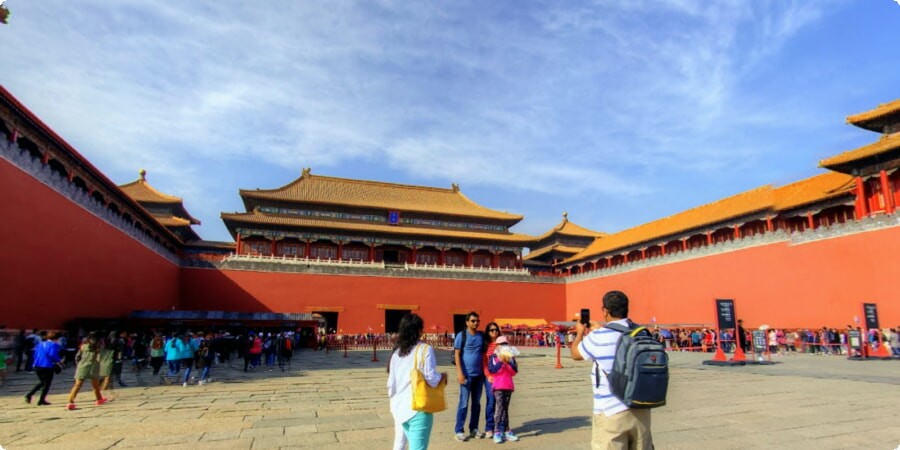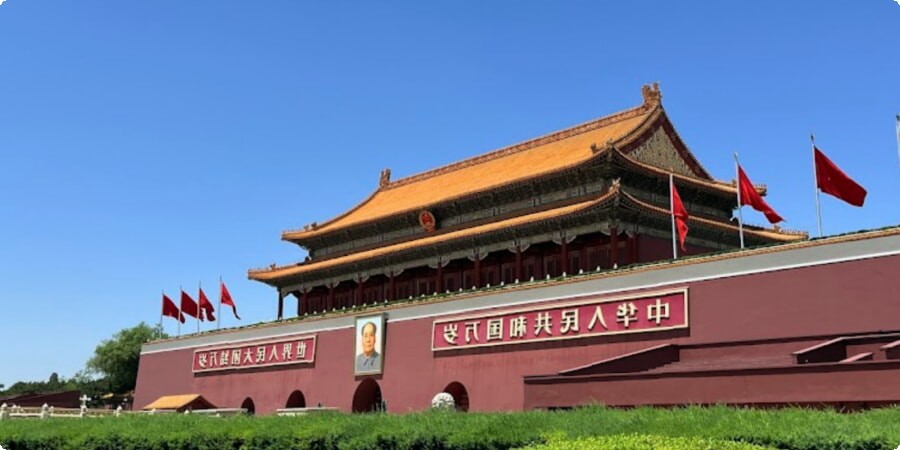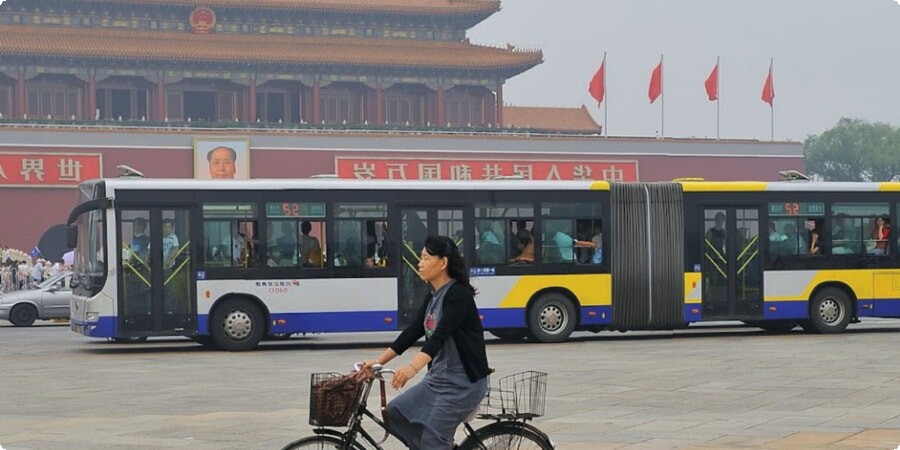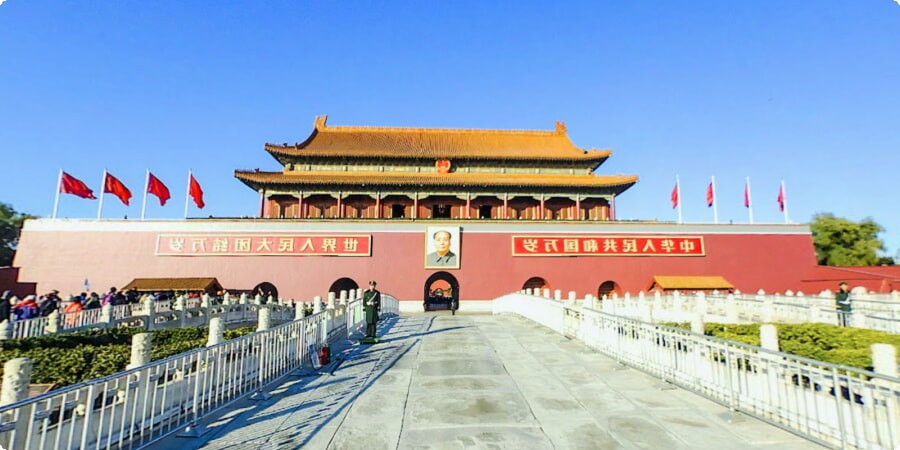Navigating Tiananmen Square: Tips and Highlights for Your Visit
Tiananmen Square, located in the heart of Beijing, is more than just a large public space; it is a symbol of China’s rich history and dynamic political landscape. Covering 44 hectares, it is one of the largest public squares in the world and serves as a focal point for various state ceremonies and public gatherings.
The square’s name translates to “Gate of Heavenly Peace,” a reference to the nearby Tiananmen Gate, which leads into the Forbidden City. The area around Tiananmen Square has been a significant site throughout Chinese history, witnessing numerous pivotal events and transformations over the centuries.
A visit to Tiananmen Square offers a chance to experience not only the grandeur of Beijing’s architecture but also to reflect on its historical importance. As you explore the square, you’ll find yourself amidst some of the most influential landmarks in modern Chinese history, making it a must-see destination for any traveler.
For a visual guide to the area, check out this Google Maps link.
Historical Background and Significance
Tiananmen Square’s historical significance extends back to the Ming Dynasty (1368–1644), when it was first constructed as a central plaza in front of the Imperial Palace. It has since evolved into a symbol of the nation's political power and has witnessed numerous historical events that have shaped modern China.
One of the most notable events in the square’s history was the 1989 pro-democracy protests. Thousands of students and citizens gathered to call for political reform, greater freedoms, and anti-corruption measures. The movement, which began peacefully, was met with a violent military crackdown, resulting in a tragic loss of life. This event remains a sensitive subject in China and is commemorated by a few official references but largely absent from public discourse.
Throughout its history, Tiananmen Square has also been the site of numerous state ceremonies and celebrations, including the founding ceremony of the People’s Republic of China on October 1, 1949. This event marked the end of the Chinese Civil War and the beginning of a new era under Communist rule.
For more details on the historical events associated with Tiananmen Square, you can read more on Wikipedia.

Major Attractions Within the Square
Tiananmen Square is home to several monumental landmarks that are essential to any visit:
-
The Monument to the People's Heroes: This towering obelisk commemorates the martyrs of the Chinese revolution. Unveiled in 1958, it stands at 38 meters tall and is adorned with inscriptions honoring those who fought for the country’s independence and liberation.
-
The Great Hall of the People: Located on the western side of the square, this grand building serves as the venue for the National People’s Congress, China’s top legislative body. Its massive size and imposing architecture reflect its importance in the political life of the nation.
-
The National Museum of China: Flanking the eastern side of the square, this museum is one of the largest in the world and offers extensive exhibits on Chinese history and art. Its collections span thousands of years, from ancient relics to modern artifacts.
-
Mausoleum of Mao Zedong: This mausoleum, situated at the southern end of the square, houses the embalmed body of Mao Zedong, the founding father of the People’s Republic of China. The site is a place of reverence for many Chinese citizens and is open to visitors who wish to pay their respects.
To make the most of your visit and explore these landmarks efficiently, consider booking a car rental upon your arrival. You can arrange a rental car at Beijing Airport through this link, making it easier to navigate the city and visit these significant sites.
Best Times to Visit Tiananmen Square
The best times to visit Tiananmen Square are during the early morning and late afternoon, when the light is soft and the crowds are thinner. Watching the daily flag-raising and lowering ceremonies, performed by the People's Liberation Army, is a unique experience. The flag-raising ceremony at dawn is particularly moving, as the soldiers march with precise coordination to the Chinese national anthem.
During the spring and autumn months, the weather in Beijing is pleasant, making it ideal for exploring the square and its surrounding attractions. Spring, from April to June, brings mild temperatures and blooming flowers, creating a picturesque setting for photographs. Autumn, from September to early November, offers clear skies and cooler weather, providing comfortable conditions for walking and sightseeing.
Summers can be hot and humid, while winters are cold and windy. If you visit during these times, dress appropriately and be prepared for weather-related challenges. Regardless of when you visit, early mornings and late afternoons remain the best times to capture the essence of Tiananmen Square without the crowds.

Navigating the Square: Tips for First-Time Visitors
Navigating Tiananmen Square can be overwhelming, especially for first-time visitors, given its vast size and the sheer number of people who visit daily. Here are a few tips to help you make the most of your visit:
-
Security Checks: Tiananmen Square is heavily monitored, and all visitors must pass through security checks. To save time, avoid carrying large bags and refrain from bringing prohibited items.
-
Footwear and Hydration: The square is expansive, so wear comfortable shoes as you will likely be walking a lot. Also, bring water to stay hydrated, especially if you’re visiting during the warmer months.
-
Restroom Locations: Restrooms are located on the sides of the square. Familiarize yourself with their locations upon arrival, as the square's large size means it can take a while to reach one.
-
Photography Tips: Tiananmen Square offers numerous photo opportunities, from wide shots capturing its grandeur to close-ups of its statues and monuments. The best time for photography is early morning or late afternoon when the light is soft, and the square is less crowded. Remember, some areas might have restrictions on photography, so pay attention to signs and security instructions.
-
Language Barriers: While there are English signs throughout the square, having a translation app or a phrasebook can be handy, especially if you need assistance or directions.
For convenience, consider booking a car for your travels in China. Having a car allows you to explore Beijing and beyond at your own pace, especially if you plan to visit multiple sites in a day. You can book a car in China through this link.
Nearby Attractions: What to See Around Tiananmen Square
While Tiananmen Square itself is a major attraction, there are several other significant sites nearby that you should not miss:
-
The Forbidden City: Directly north of Tiananmen Square, this vast imperial palace complex was home to Chinese emperors for nearly 500 years. Now a museum, it houses a collection of ancient artifacts, stunning architecture, and beautifully preserved courtyards. Allow at least half a day to explore its many halls and pavilions.
-
Zhongshan Park: Located to the west of the Forbidden City, Zhongshan Park is a peaceful garden perfect for a relaxing stroll after the intensity of the square. Named after Sun Yat-sen, the park features beautiful landscaping, ancient cypress trees, and a serene lake.
-
Beihai Park: A short walk northwest of Tiananmen Square, Beihai Park offers a tranquil escape from the bustling city. Known for its large lake, traditional pavilions, and the iconic White Dagoba, it’s a great place to unwind and enjoy a boat ride. The park provides stunning views of the Forbidden City from its higher points.
-
The National Centre for the Performing Arts: Also known as “The Giant Egg,” this modern architectural marvel is located just to the west of Tiananmen Square. It hosts a variety of performances, including opera, ballet, and symphonies. Even if you’re not attending a show, the building itself is worth visiting for its unique design.
Exploring these nearby attractions will give you a fuller experience of Beijing’s rich history and vibrant culture. Make sure to plan your day to include a mix of activities, from historical exploration to peaceful relaxation, for a comprehensive visit to the area.

Shopping and Dining Around Tiananmen Square
After exploring the historic and cultural landmarks of Tiananmen Square, you might want to experience the vibrant shopping and dining options nearby. This area offers a blend of modern and traditional Chinese culture, providing a unique experience for visitors.
Shopping: For those looking to shop, the nearby Wangfujing Street is a must-visit. One of Beijing’s most famous shopping streets, Wangfujing offers everything from high-end brands to local souvenirs. It’s a great place to buy traditional Chinese items like silk, tea, and calligraphy supplies. Don’t forget to explore the side streets, where you can find smaller shops selling antiques and handcrafted items. If you’re interested in seeing a local market, Donghuamen Night Market offers a range of goods and an opportunity to experience Beijing's street market culture, though it is more famous for its exotic street food than for traditional shopping.
Dining: When it comes to dining, the options around Tiananmen Square are as diverse as the city itself. For a taste of local cuisine, try Quanjude Roast Duck Restaurant on Wangfujing Street, famous for its Peking duck. If you prefer a variety of Chinese cuisines, Xiaoyunlou Restaurant offers a menu featuring dishes from across China. For a quick bite, you can find plenty of street food vendors offering everything from jianbing (Chinese crepes) to baozi (steamed buns).
For those looking for a more contemporary dining experience, there are numerous cafes and international restaurants around the square. The South Cathedral Area has several quaint coffee shops, perfect for a relaxing afternoon break.
Exploring the shopping and dining scene around Tiananmen Square not only gives you a chance to rest and refuel but also to experience the local culture in a more intimate way.

Practical Information for Your Visit
When planning your visit to Tiananmen Square, there are a few practical considerations to keep in mind to ensure a smooth and enjoyable experience.
Operating Hours and Admission: Tiananmen Square is open to the public daily, but the hours can vary slightly depending on the season. The square is accessible at all hours, but specific attractions like the Mausoleum of Mao Zedong and the National Museum of China have set operating hours. It's a good idea to check these times in advance and plan your visit accordingly.
Entry Requirements: Due to the square's political significance, security is tight. All visitors are required to pass through a security check, and it's important to carry your passport as you may be asked for identification. Large bags, tripods, and certain items like lighters are not allowed, so plan accordingly to avoid delays at the entrance.
Getting There: The most convenient way to reach Tiananmen Square is by subway. Tiananmen East and Tiananmen West stations on Line 1 of the Beijing Subway are the closest stops. Buses also serve the area, but traffic can be unpredictable. If you’re traveling from other parts of China or planning to visit other destinations outside of Beijing, it might be worthwhile to consider renting a car. Having a car offers the flexibility to explore at your own pace and make spontaneous stops along the way. You can book a car in China through this link.
Guided Tours: If you’re looking to deepen your understanding of the area’s history and significance, consider joining a guided tour. Many tours are available that combine visits to Tiananmen Square, the Forbidden City, and other nearby attractions, providing comprehensive insight into Beijing’s rich history.
Accessibility: The square is generally accessible for visitors with mobility issues, although some of the older structures and attractions may have limited access. Be sure to check accessibility details in advance if needed.
Being prepared with this practical information can help you navigate Tiananmen Square more efficiently and make the most of your visit.
After spending a day exploring Tiananmen Square and its surroundings, it's clear that this iconic space is more than just a tourist destination—it's a window into China's past, present, and future. Whether you're marveling at its massive size, reflecting on its historical significance, or enjoying a meal nearby, Tiananmen Square offers an experience that is both profound and enriching. As you stand in the heart of Beijing, surrounded by centuries of history and culture, you'll feel a connection to the countless stories and events that have shaped this remarkable nation.